 Backend Development
Backend Development Python Tutorial
Python Tutorial Introducing how to use PyCharm's Python version switching function to solve Python version compatibility issues
Introducing how to use PyCharm's Python version switching function to solve Python version compatibility issues
Solving Python version compatibility issues: Introduction to PyCharm’s Python version switching function, specific code examples are required
In the Python development process, version compatibility often becomes a problem . Different versions of the Python language may have some different syntax and functionality. In order to solve this problem, JetBrains developed a powerful Python integrated development environment (PyCharm), which provides convenient Python version switching function. This article will introduce how to use the Python version switching function in PyCharm and provide relevant code examples.
First, make sure you have multiple Python versions installed in PyCharm. In PyCharm's settings, you can find the "Project Interpreter" option through "Preferences" (Mac) or "Settings" (Windows). In this option, you can see the Python interpreter used by the current project. Click the gear icon in the upper right corner and select "Add" to add other Python versions.
Switching the Python version in the project requires setting up the project. Open the project, click "File" in the menu bar, select "Settings" (or "Preferences"), find "Project", and then select "Project Interpreter". In the "Project Interpreter" drop-down list, select the desired Python version.
The following is a concrete example:
Suppose we have a Python project containing the following code:
def greet():
print("Hello, World!")
greet()With default settings, the project uses the Python 3.6 version for interpretation . If we wish to switch to the Python 2.7 version, we can follow the steps above to open the project settings and select the desired Python version. In this example, we choose Python version 2.7.
After re-running the project, we will find that the output results are different:
Hello, World!
The above code uses the print statement for output in the Python 2.7 version, but uses the print function for output in the Python 3.6 version.
Through PyCharm's Python version switching function, we can easily switch the Python version used in the project, thereby solving the compatibility issues of different Python versions.
In addition to switching the Python version of the entire project, you can also set the Python version individually for each file. In the upper right corner of the file editing window, there is a drop-down menu identified by the Python version number, through which you can select different Python versions.
In summary, PyCharm’s Python version switching function can easily solve Python version compatibility issues. In the project settings, you can switch the Python version of the entire project, and you can also set the Python version individually for each file. This provides us with greater flexibility and convenience in the Python development process.
We hope that the code examples and steps provided in this article can help readers better use PyCharm to solve Python version compatibility issues.
The above is the detailed content of Introducing how to use PyCharm's Python version switching function to solve Python version compatibility issues. For more information, please follow other related articles on the PHP Chinese website!
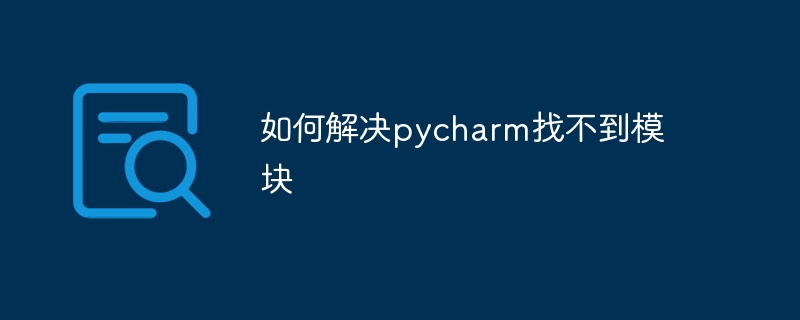 如何解决pycharm找不到模块Dec 04, 2023 pm 01:31 PM
如何解决pycharm找不到模块Dec 04, 2023 pm 01:31 PM解决pycharm找不到模块的方法:1、检查python解释器;2、安装缺失的模块;3、检查项目结构;4、检查系统路径;5、使用虚拟环境;6、重启PyCharm或电脑。PyCharm找不到模块是一个常见的问题,但通常可以通过一些步骤来解决,这个问题可能由多种原因引起,比如Python解释器配置不正确、模块没有正确安装或者PyCharm的项目设置有问题。
 pycharm打不开怎么办Dec 07, 2023 pm 05:09 PM
pycharm打不开怎么办Dec 07, 2023 pm 05:09 PMpycharm打不开可以通过检查系统要求、重新启动计算机、检查防病毒软件和防火墙设置、检查日志文件、更新PyCharm、检查系统环境变量、重置PyCharm设置、检查日志文件和报错信息、卸载并重新安装PyCharm和向PyCharm官方支持寻求帮助来解决。详细介绍:1、检查系统要求,确保计算机满足PyCharm的最低系统要求;2、重新启动计算机等等。
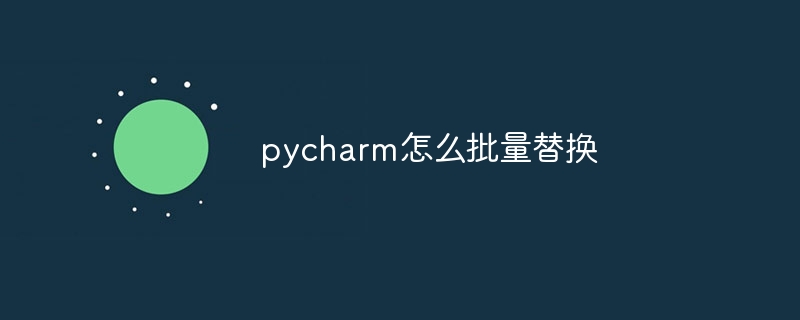 pycharm怎么批量替换Dec 07, 2023 pm 05:27 PM
pycharm怎么批量替换Dec 07, 2023 pm 05:27 PMpycharm可以通过使用搜索和替换功能、结合正则表达式进行高级替换、使用代码重构功能、使用Structural Search and Replace和导入外部工具进行批量替换来批量替换。详细介绍:1、使用搜索和替换功能,打开PyCharm,打开要进行批量替换的项目或文件夹等等。
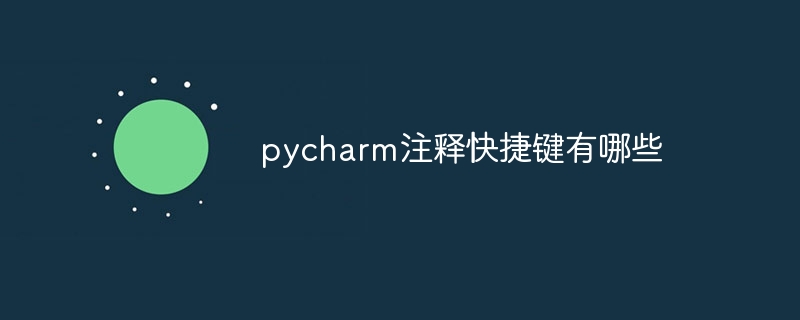 pycharm注释快捷键有哪些Dec 05, 2023 pm 02:14 PM
pycharm注释快捷键有哪些Dec 05, 2023 pm 02:14 PMpycharm注释快捷键有:1、单行注释,使用“#”;2、多行注释,使用三引号“””;3、批量注释,选择要注释的文本行,背景变化后,同时按“Ctrl+/”;4、取消批量注释,选择已注释的文本行,背景变化后,同时按“Ctrl+/”;5、批量缩进,选择要缩进的文本行,背景变化后,按下“TAB”键;6、取消批量缩进,选择要缩进的文本行,背景变化后,按下“SHIFT+TAB”键。
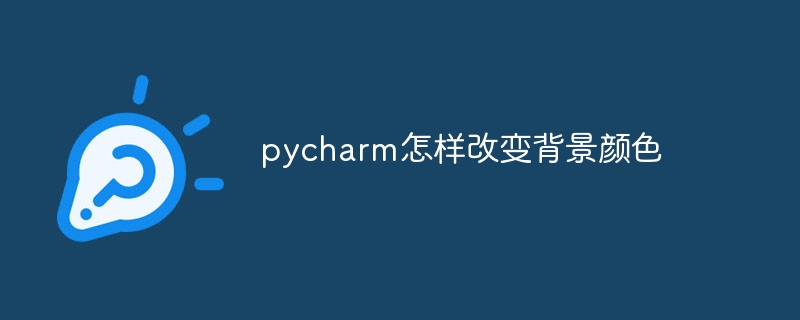 pycharm怎样改变背景颜色Dec 07, 2023 pm 04:58 PM
pycharm怎样改变背景颜色Dec 07, 2023 pm 04:58 PMpycharm改变背景颜色的方法:1、使用主题设置,在PyCharm设置对话框中,选择 "Editor",选择喜欢的主题,点击 "Apply"即可;2、使用自定义背景颜色,在 "Editor"选项卡中,点击"Background",选择喜欢的颜色,确认即可;3、使用快捷键快速更改背景颜色,按下 "Ctrl+Alt+S" 组合键打开设置对话框,跟上面一样选择型号的颜色即可等等。
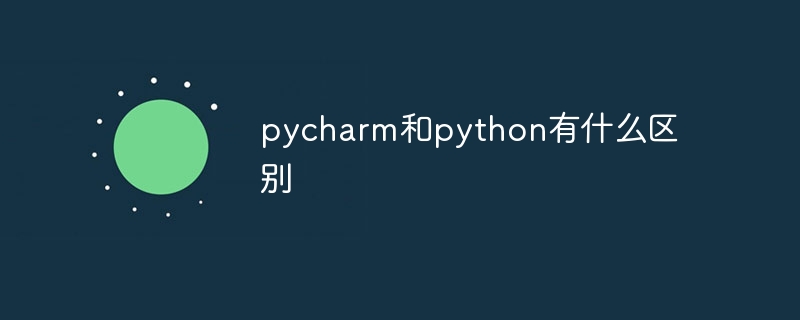 pycharm和python有什么区别Dec 04, 2023 pm 04:26 PM
pycharm和python有什么区别Dec 04, 2023 pm 04:26 PMpycharm和python区别是:1、PyCharm是一款软件开发工具,而Python则是一种编程语言;2、PyCharm提供了丰富的功能和工具,而Python本身提供了各种库和模块;3、PyCharm主要用于编写、调试和运行Python代码,而Python语言可以应用于各种开发场景等等。
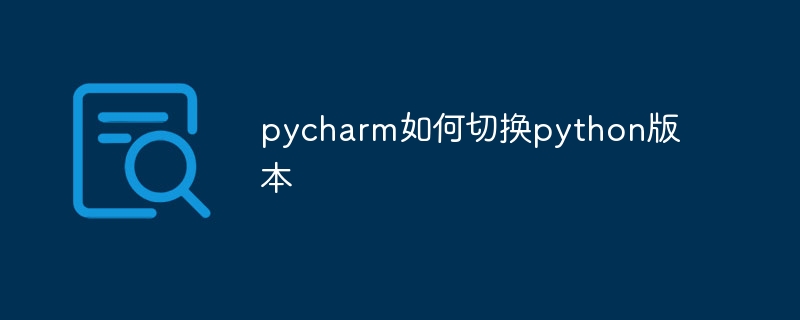 pycharm如何切换python版本Dec 08, 2023 pm 02:14 PM
pycharm如何切换python版本Dec 08, 2023 pm 02:14 PMpycharm切换python版本的方法:1、通过项目配置,在“New Project”或“Open”对话框中,可以指定Python解释器的版本;2、使用虚拟环境,虚拟环境为每个项目提供了一个隔离的Python环境,可以在不影响其他项目的情况下更改和升级库和依赖项;3、使用系统环境变量,可以添加一个新的系统环境变量,指向使用的Python解释器的路径;4、使用第三方插件等等。
 pycharm快捷键大全Dec 04, 2023 pm 04:39 PM
pycharm快捷键大全Dec 04, 2023 pm 04:39 PMpycharm快捷键有:1、Ctrl + C,复制选定的文本;2、Ctrl + X,剪切选定的文本;3、Ctrl + V,粘贴剪切板上的文本;4、Ctrl + Z:撤销上一次操作;5、Ctrl + Y:重做上一次取消的操作;6、Ctrl + D:复制当前行或选中的部分,并将其插入到下一行;7、Tab:缩进选中的代码;8、Shift + Tab:取消缩进选中的代码等等。


Hot AI Tools

Undresser.AI Undress
AI-powered app for creating realistic nude photos

AI Clothes Remover
Online AI tool for removing clothes from photos.

Undress AI Tool
Undress images for free

Clothoff.io
AI clothes remover

AI Hentai Generator
Generate AI Hentai for free.

Hot Article

Hot Tools

Zend Studio 13.0.1
Powerful PHP integrated development environment

Notepad++7.3.1
Easy-to-use and free code editor

Atom editor mac version download
The most popular open source editor

SAP NetWeaver Server Adapter for Eclipse
Integrate Eclipse with SAP NetWeaver application server.

MinGW - Minimalist GNU for Windows
This project is in the process of being migrated to osdn.net/projects/mingw, you can continue to follow us there. MinGW: A native Windows port of the GNU Compiler Collection (GCC), freely distributable import libraries and header files for building native Windows applications; includes extensions to the MSVC runtime to support C99 functionality. All MinGW software can run on 64-bit Windows platforms.





